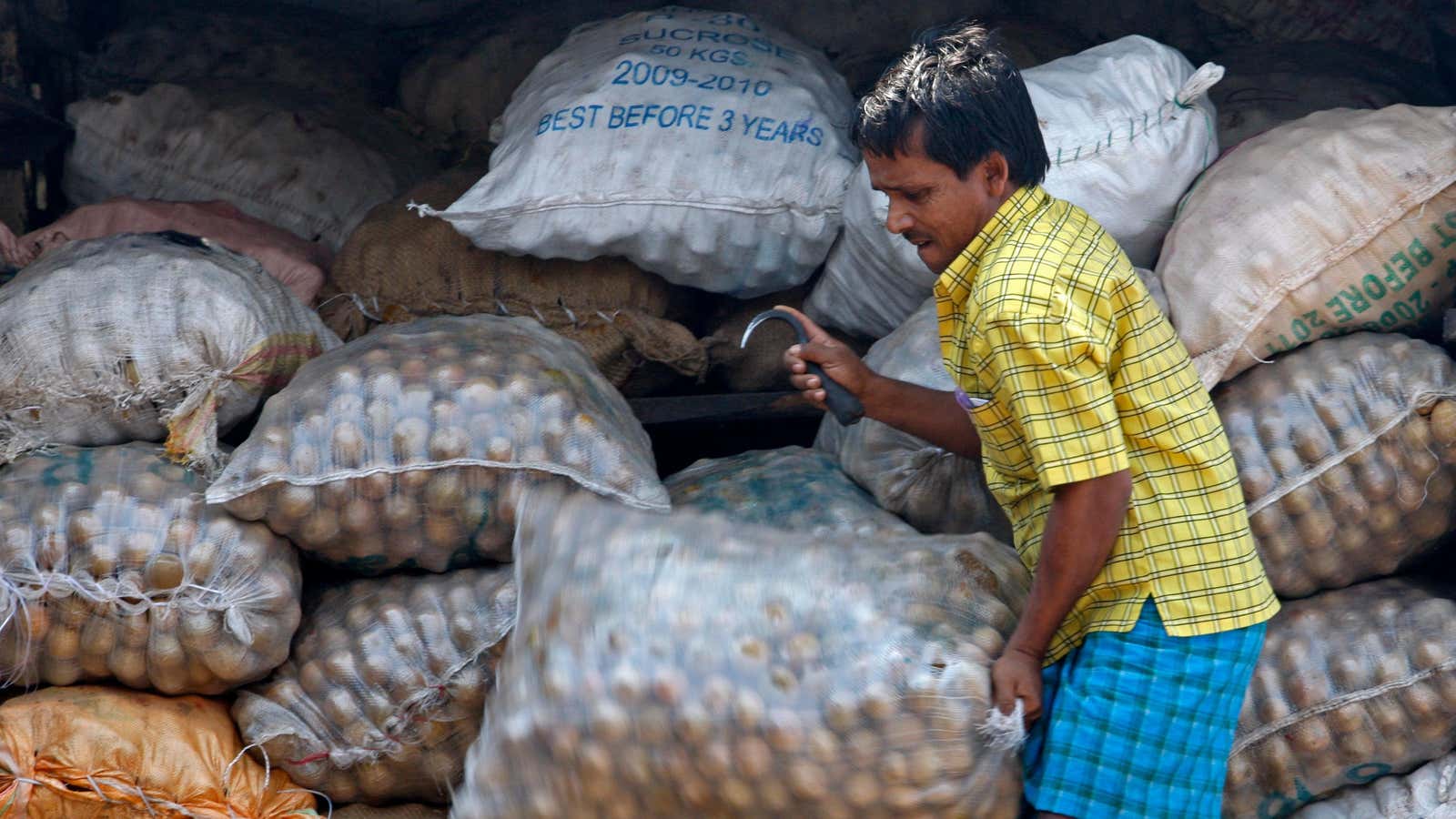Easing global commodity prices have begun to reflect on inflation in India, at both the wholesale and consumer levels.
Wholesale price rise in April fell into negative territory for the first time since July 2020, to -0.92%, government data showed yesterday (May 15). It stood at 15.38% in the same month last year.
The decline in inflation in goods sold in bulk was primarily driven by a fall in the prices of energy, non-food, and food items.
Similarly, the more closely monitored consumer price index (CPI), too, eased to an 18-month low of 4.7% in April, according to data released last week. It has remained in the Reserve Bank of India’s (RBI) target range of 2-6% for the second consecutive month now.
“A lower WPI [wholesale price index] fell to print could help in pulling retail inflation down with its lagged impact on the core CPI inflation,” Rajani Sinha, chief economist at CareEdge Ratings said in a note.
However, economists remain on the edge when it comes to CPI. It may not yet be time for RBI to ease its monetary policy, they feel.
The flip side to the inflation trajectory
Food inflation, which accounts for about 40% of India’s consumption basket, has eased from 5.11% in March to a 17-month low of 4.22% in April.
This was helped by the high base of the corresponding period in 2022, along with a moderation in global commodity prices.
However, the US-based National Oceanic and Atmospheric Administration has forecasted a 60% probability of El Niño this year. Food grain production in India falls by around 57% in El Niño years. This could fuel a rise in food prices.
“Over 2023-24, inflation is expected to range tightly between 5.0 and 5.6% if India survives an El Nino event adversely affecting the southwest monsoon, given global uncertainties,” the RBI said in its April bulletin.
